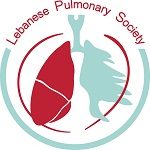The second day of the 2014 annual meeting addressed various topics such as therapeutic patient education, pleural diseases , palliative care , pulmonary hypertension, obstructive lung diseases including asthma and COPD , interstitial lung disease and lymphangiomoymatosis . Therapeutic patient education and palliative care are two topics rarely discussed in our meetings. A culture change is needed for their implementation in our country and partnership with the third party payers is crucial.
During the day :
Fayssal Elhusseini, Benjamin Putois and Souad Ghalib have shown that therapeutic patient education is an approach that clearly improves the quality of care of the patient with chronic lung disease while reducing cost significantly.
Frank Ferris has convinced us about the value of including palliative care in the management of patients with chronic lung disease as soon as possible during the management of their illness.
Gary Lee introduced to us pleural pathologies in a modern and very interesting perspective, by taking Light’s criteria to another way of analyzing pleural effusion. He stressed on the usefulness of disease markers in the pleural fluid.
Thomas Sandstorm, invited by Novartis, reminded us about the use of Omalizumab in patients with severe asthma.
Jeffrey Chapman has shed light on the association between interstitial lung disease and connective tissue diseases. He also explored new dimensions in lymphangiomyomatosis .
Georges Dabar, invited by Actelion, clarified the pharmacological treatment of pulmonary arterial hypertension and discussed the role of combination therapy in the management of this disease.
Michael Rudolf, invited by Novartis, talked about properties of a new Long Acting Muscarinic Agent : Glycopyrronium .
All the podcasts of these conferences will be upload soon.
La deuxième journée du congrès 2014 de la société a permis d’aborder des sujets aussi variés que l’éducation thérapeutique, les pathologies pleurales, les soins palliatifs, l’hypertension pulmonaire, les pathologies bronchiques incluant bronchopathie chronique et asthme, certaines maladies interstitielles et la lymphangiomoymatose.
L’éducation thérapeutique du malade et les soins palliatifs sont deux sujets rarement abordés dans nos congrès. Un changement de mentalité est nécessaire pour assurer leur implémentation dans notre pays et pour que les tiers payants acceptent de les prendre en charge.
Durant cette journée :
Fayssal Elhusseini, Benjamin Putois et Souad Ghalib nous ont montré que l’éducation thérapeutique du malade est une approche qui améliore clairement la qualité de la prise en charge du malade atteint de pathologie pulmonaire chronique tout en diminuant les frais de manière significative.
Frank Ferris nous a convaincu de l’intérêt de l’inclusion des soins palliatifs dans la prise en charge des malades atteints de pathologie pulmonaire chronique en insistant sur le fait que ce type de soins devrait intervenir le plus tôt possible dès l’annonce du diagnostic.
Gary Lee nous a présenté les pathologies pleurales dans une perspective moderne et très intéressante, faisant évoluer les critères de Light vers une nouvelle analyse des épanchement pleuraux en insistant sur les marqueurs retrouvés dans le liquide pleural de certaines pathologies.
Thomas Sandstorm invité par Novartis nous a rappelé l’intérêt de l’usage de l’omalizumab chez les asthmatiques sévères.
Jeffrey Chapman nous a éclairci certains aspects encore obscurs de certaines maladies interstitielles ou du tissu conjonctif, et de la lymphangiomyomatose.
Georges Dabar a clarifié la prise en charge médicamenteuse de l’hypertension artérielle pulmonaire en précisant la place des traitements combinant plusieurs médicaments.
Michael Rudolf invité par Novartis a détaillé les propriétés d’un nouveau bronchodilatateur de longue durée d’action de la famille des antimuscaniques: le Glycopyrronium.
Les conférences seront mises en ligne prochainement.

